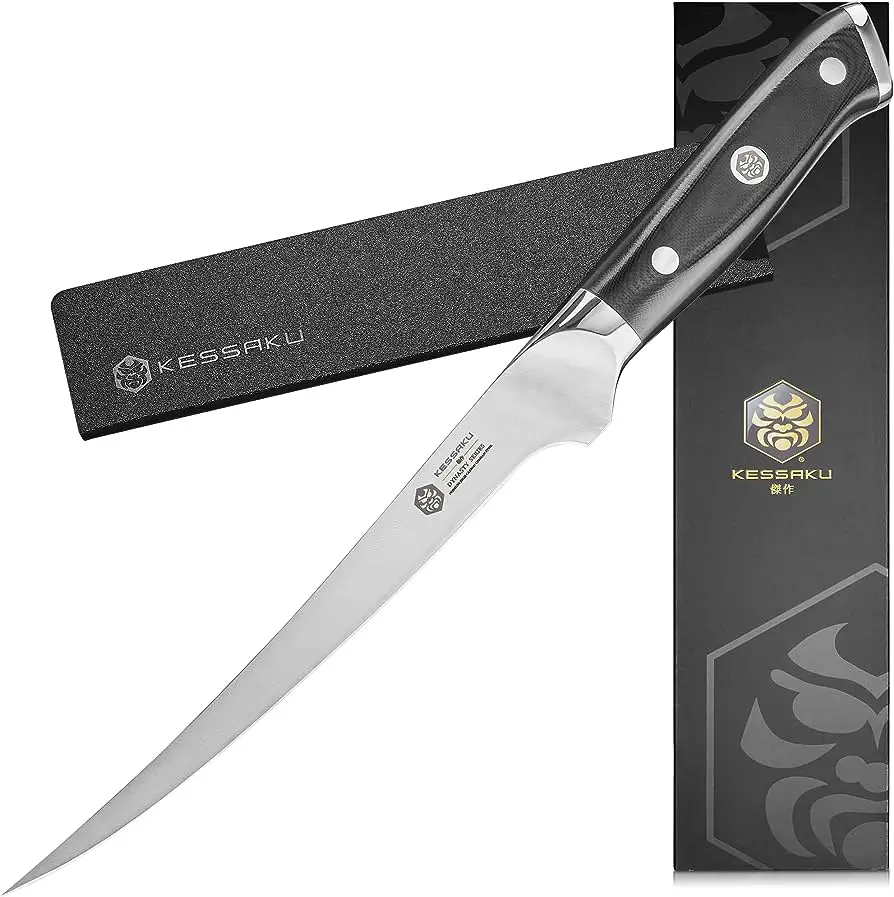Yes, you can use a boning knife to fillet fish. A boning knife is a versatile kitchen tool commonly used to remove bones from meat, but it can also be used to fillet fish.
With its narrow and flexible blade, a boning knife can easily maneuver around the bones and through the delicate flesh of the fish, making clean and precise cuts. It allows you to separate the fillets from the carcass, removing any unwanted bones in the process.
So, if you don’t have a dedicated fillet knife, a boning knife can certainly get the job done effectively.
Why A Boning Knife Is Essential For Filleting Fish
A boning knife is an essential tool for precision filleting of fish. It differs from other types of knives as it has a long, slim, and flexible blade. This design allows for effortless maneuvering around the bones and delicate flesh of the fish.
Using a boning knife offers numerous benefits for fish filleting. Its sharp and narrow blade enables clean and precise cuts, minimizing unnecessary wastage. Additionally, the flexibility of the boning knife allows you to easily navigate through intricate areas, ensuring you remove every bone with accuracy.
The control and precision provided by a boning knife make it the go-to tool for experienced and amateur fish filleters alike. Filleting fish with a boning knife ensures optimal results, making it a crucial asset in every fisherman’s culinary arsenal.
:max_bytes(150000):strip_icc()/howto-chx-butcher-v2-0174-mld111000_vert-906356577b844865a5361cc201a38e70-horiz-c971ff30bed44dcdb18d25ccb5d33bb2.jpg)
Credit: www.marthastewart.com
Understanding The Anatomy Of A Boning Knife For Filleting Fish
A boning knife can be used effectively to fillet fish due to its unique anatomy. Its blade is thin, flexible, and incredibly sharp, allowing for precise and clean cuts. The handle is designed with ergonomics in mind, providing a comfortable grip that reduces fatigue during extended use.
This is especially important when filleting fish, as it requires intricate and repetitive motions. Additionally, the spine of the boning knife offers strength and control, allowing the user to maneuver the blade with precision. Overall, understanding the anatomy of a boning knife is crucial for successful fish filleting, as it ensures that the right tool is being utilized for the job.
With its thin blade, ergonomic handle, and sturdy spine, a boning knife is an excellent choice for filleting fish.
Step-By-Step Guide: Filleting Fish With A Boning Knife Like A Pro
Filleting fish with a boning knife is a skill that can be learned with practice. Before you start, make sure to clean and scale the fish thoroughly. Then, remove the head and tail to prepare it for filleting. Next, position the fish and make a diagonal incision to the backbone, ensuring you have a good starting point.
Run the boning knife along the backbone to separate the fillet from the ribs. Take your time to remove any remaining bones and skin from the fillet. Finally, trim the fillet to your desired shape and size. With patience and practice, you can fillet fish like a pro using a boning knife.
Tips And Tricks For Filleting Fish With A Boning Knife
Using a boning knife to fillet fish requires a few important tips and tricks. Firstly, it’s crucial to select the right size boning knife for the particular type of fish you’re working with. Keeping the blade sharp is essential to ensure clean and precise cuts.
Additionally, applying the correct amount of pressure while filleting helps prevent damage to the delicate flesh of the fish. By following these guidelines, you can master the art of filleting fish with a boning knife.
Common Mistakes To Avoid When Filleting Fish With A Boning Knife
Using a boning knife to fillet fish requires avoiding common mistakes. One mistake is not using a sharp enough blade, which can make the process more difficult and time-consuming. Additionally, applying excessive force while filleting can lead to damage on the delicate fillet.
It’s important to approach the task with precision and finesse. Another mistake is removing too much flesh during the filleting process. This can result in a loss of yield and affect the overall presentation of the fillet. To avoid these mistakes, make sure to have a sharp and appropriate boning knife, use gentle and controlled motions, and be mindful of how much flesh is being removed.
By doing so, you can achieve clean and professional fillets with a boning knife.
Alternative Techniques: Using Other Knives For Fish Filleting
When filleting fish, you don’t necessarily have to use a boning knife. There are alternative techniques and other knives that can be used for this task. One option is a chef’s knife, which is versatile and works well for larger fish.
Another option is a fillet knife, which is narrower and more flexible, making it ideal for precise filleting. Additionally, a serrated knife can be suitable for fish with tough skin. So, if you don’t have a boning knife on hand, don’t worry.
You can still achieve excellent results by using these alternative knives for fish filleting.
Conclusion
Using a boning knife to fillet fish can be a convenient option, especially if you already have one in your kitchen arsenal. While it may not be the traditional choice for filleting, a boning knife can still deliver satisfactory results with a little practice.
Its sharp and narrow blade allows for precision cuts, enabling you to remove the bones and skin from the fish effectively. However, it is important to remember that using a boning knife to fillet fish requires skill and caution to ensure a clean and professional-looking cut.
Ultimately, the decision to use a boning knife for filleting comes down to personal preference and the availability of other specialized filleting knives. So, if you find yourself without a fillet knife but have a boning knife on hand, don’t hesitate to give it a try.
With the right technique, you can still achieve beautifully filleted fish every time.

This is Kristina, a passionate content writer, copywriter, and bookworm. Always dedicated to providing informative and accurate product reviews for enjoyable shopping. In my free time, I love spending time in nature and with animals and doing yoga.

